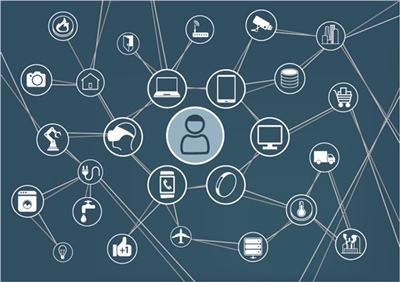Seven major noises inside the sensor circuit

Circuit design is the key factor for the superior performance of the sensor. Since the output of the sensor is a very small signal, if the useful signal is submerged due to noise, it will not be worth the loss. Therefore, it is particularly important to strengthen the anti-interference design of the sensor circuit. Before that, we must understand the sources of noise in the sensor circuit in order to find better ways to reduce it. In general, the sensor circuit noise mainly includes the following seven types:
Low-frequency noise
The low-frequency noise is mainly caused by the discontinuity of the conductive particles inside. Especially for carbon film resistors, there are many tiny particles inside the carbonaceous material, and the particles are discontinuous. When the current flows, the conductivity of the resistor will change, causing the current to change, resulting in a flash arc similar to poor contact. . In addition, transistors may also generate similar popping noise and flicker noise, and the mechanism of their generation is similar to the discontinuity of particles in the resistor, and it is also related to the doping degree of the transistor.
Shot Noise from Semiconductor Devices
Due to the change of the voltage of the barrier region at both ends of the semiconductor PN junction, the amount of charge accumulated in this region changes, thus showing the capacitance effect. When the applied forward voltage increases, the electrons move to the depletion region. However, when it decreases, it moves the electrons and holes away from the depletion region. If we apply a reverse voltage, the depletion region changes in the opposite direction. When current flows through the barrier region, this change causes tiny fluctuations in the current flowing through the barrier region, resulting in current noise. The size of its noise is proportional to temperature and frequency bandwidth Δf.
High frequency thermal noise
The random movement of electrons inside electrical conductors causes High-frequency thermal noise. The higher the temperature, the more intense the electron movement. The random movement of electrons inside the conductor will form many tiny current fluctuations inside it because it is a disorderly movement, so its average total current is zero, but when we connect it as a component (or as part of a circuit) it is amplified. After the circuit is installed, the internal current will be amplified and become a noise source, especially the high-frequency thermal noise of the circuit operating in the high-frequency frequency band.
Usually, within the power frequency, the thermal noise of the circuit is proportional to the passband. The wider the passband, the greater the influence of the thermal noise of the circuit. Taking a 1kΩ resistor as an example, if the passband of the circuit is 1MHz, the effective value of the open-circuit voltage noise present at both ends of the resistor is 4μV (assuming the temperature is room temperature T=290K). It seems that the electromotive force of the noise is not large, but if it is connected to an amplifier circuit with a gain of 106 times, the output noise can reach 4V, and the interference to the circuit will be very large at this time.
Interference from electromagnetic components on circuit boards
Many circuit boards have electromagnetic components such as relays and coils. When the current passes through, the inductance of the coil and the distributed capacitance of the casing radiate energy to the surrounding, and the energy will interfere with the surrounding circuits. When components such as relays work repeatedly, an instantaneous reverse high voltage will be generated, forming an instantaneous surge current. This instantaneous high voltage will have a great impact on the circuit, thus seriously disturbing the normal operation of the circuit.
Transistor noise
The noise of the transistor mainly includes thermal noise, shot noise and flicker noise.
Irregular thermal movement and the corresponding lead resistance cause thermal noise.
The current in the so-called BJT is just an average value. In fact, the number of carriers injected into the base region through the emitter junction is different at each instant, so the emitter current or collector current has random fluctuations, which will generate shot noise.
poor surface cleaning of transistors cause flicker noise. It is related to the recombination of minority carriers on the semiconductor surface. Which is manifested as the fluctuation of the emitter current, and its current noise spectral density is known as 1/f noise. It mainly plays a major role in the low frequency (below kHz) range.
Resistor noise
The interference of the resistor comes from the inductance, capacitive effect, and thermal noise. For example, a solid-core resistor with a resistance value of R can be equivalent to a series-parallel connection of a resistor R, a parasitic capacitance C, and a parasitic inductance L. Generally speaking, the parasitic capacitance is 0.1~0.5pF, and the parasitic inductance is 5~8nH. At frequencies higher than 1MHz, we can not ignore these parasitic inductances and capacitances.
All kinds of resistors will generate thermal noise. When the circuit doesn’t connect to a resistor with a resistance value of R, the thermal noise voltage generated in the frequency bandwidth B is:
In the formula: k is the Boltzmann constant; T is the temperature (unit: K). Thermal noise voltage itself is a non-periodically varying function of time, so its frequency range is very broad. Therefore, the wideband amplifier circuit is more affected by noise than the narrowband.
In addition, the resistance will also generate contact noise, and the contact noise voltage is:
Where: I is the mean square value of the current flowing through the resistor; f is the center frequency; k is a constant related to the geometry of the material. Since Vc plays an important role in the low frequency band, it is the main noise source of the low frequency sensor circuit.
Integrated circuit noise
There are generally two types of noise interference in integrated circuits: one is radiation the other is conduction. These noises will have a greater impact on other electronic devices connected to the same AC power grid. The noise spectrum extends beyond 100MHz. In the laboratory, you can use a high-frequency oscilloscope (above 100MHz) to observe the waveform. Between the power supply and the ground pin, you will see noise spikes.





